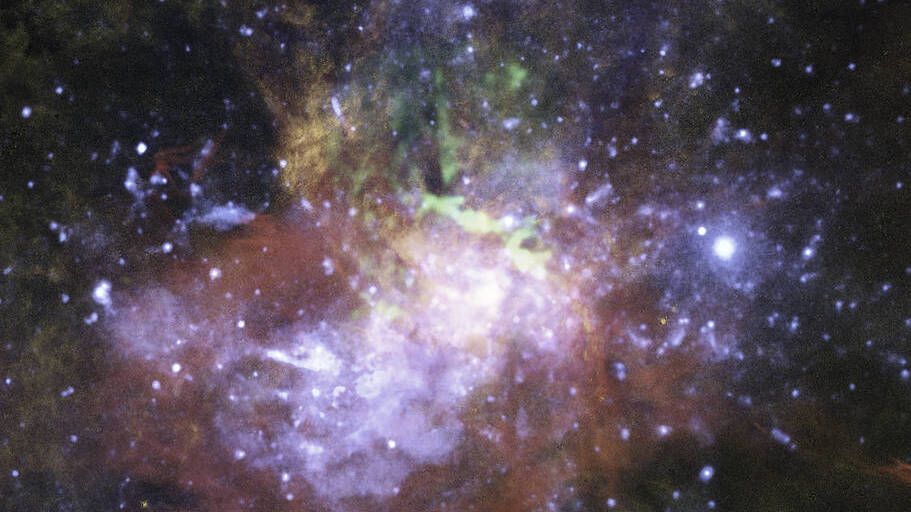The universe was born in light. If modern cosmology is right, for the first forty thousand years or so after the Big Bang the most important component in the young, hot universe was electromagnetic radiation, a situation that continued until the universe had cooled sufficiently for the first hydrogen and helium atoms to form. Temperatures were still high enough at that point for the cosmos to be filled with an opaque, glowing plasma.
After a few hundred thousand years, as the universe continued to expand and cool, the first neutral atoms formed and a great darkness began, broken perhaps a billion years later by the appearance of the first stars.
These pioneers are thought to have been much more massive than their descendants in today’s night sky, each several hundred times the mass of the Sun. They would have been short-lived, as the enormous temperatures at their cores drove nuclear fusion fast enough to exhaust their reserves of fuel in less than a million years, finally exploding in brilliant supernovae. Extreme conditions during the explosion would have stimulated further nuclear reactions, producing carbon, oxygen and a rich variety of other elements which, scattered throughout a nascent galaxy by the power of the explosion, were incorporated into subsequent generations of stars.
Though their lives were brief and their existence solitary, with perhaps just one forming per galaxy, the first stars have a long legacy. The Sun, the Solar System and the Earth, not to mention our bodies and much of what we see around us, probably include material that was produced in the dramatic death of the Milky Way’s first star. In a few months, for the first time, light from some of those first stars will encounter a device capable of recording it.
A model of beautiful science writing from the LRB. It’s also full of amazing information on the James Webb Space Telescope and its predecessor Hubble.
Because of the expansion of the universe, stars and galaxies which shone brightly thirteen billion years ago in the range of wavelengths detectable by the human eye are now best seen in the infrared. (Crudely put, the light has been stretched into longer waves.) To make the observatory sensitive to this redshifted light, the hexagonal segments that make up JWST’s primary mirror are coated with a thin layer of gold, which is much better at reflecting infrared than visible light. A telescope’s collecting power is dictated by the size of the primary mirror: astronomers, both amateur and professional, suffer from ‘aperture fever’, an insatiable yearning for bigger and bigger mirrors. JWST has a mirror 6.5 metres across, larger than any telescope on Earth built before the 1990s, but also wider than any rocket can hold. On the launch pad, therefore, much of the telescope structure was folded in on itself, stowed in an extremely expensive and fragile piece of origami…
Telescope mirrors are made with incredible precision – you could stretch Hubble’s to the size of the continental United States without finding a bump an inch high – but the lack of a single washer, no more than a millimetre thick, missing from a piece of test equipment, had led Hubble’s team to fashion with exquisite care a mirror of the wrong shape. The result was blurred images no better than those achieved from the ground. But Hubble in low Earth orbit could be reached by astronauts on the Space Shuttle, who were able to install a set of corrective optics.

